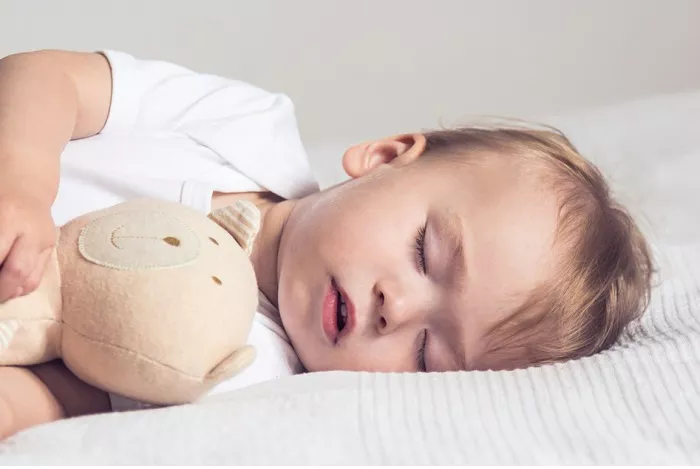Ensuring your 7-month-old baby is comfortable and safe during sleep is essential for their well-being and development. At this age, babies are active and may have outgrown some of the clothing and sleep arrangements they had as newborns. This article will guide you through the best practices for dressing your 7-month-old for sleep, considering factors like temperature, comfort, and safety.
Understanding Your Baby’s Sleep Needs
1. Sleep Patterns
At 7 months, most babies sleep about 12-16 hours a day, including naps. They usually have longer stretches of sleep at night but may still wake up once or twice. Understanding their sleep patterns helps in choosing the right sleepwear.
2. Temperature Regulation
Babies cannot regulate their body temperature as effectively as adults. They are more susceptible to overheating or getting too cold. It’s crucial to dress them appropriately for the ambient temperature of their sleeping environment.
Key Factors to Consider
1. Room Temperature
The ideal room temperature for a baby’s sleep is between 68-72°F (20-22°C). This range helps prevent overheating or chilling. Use a room thermometer to monitor the temperature.
2. Layering
Layering allows you to adjust your baby’s clothing according to the room temperature. However, avoid excessive layering, which can cause overheating.
3. Fabric Choice
Choose breathable, soft, and hypoallergenic fabrics to avoid skin irritation and ensure comfort.
Recommended Sleepwear for 7-Month-Olds
1. Onesies
Onesies are versatile and comfortable. They come in various sleeve lengths and fabric weights, making them suitable for different temperatures.
Lightweight Cotton Onesies: Ideal for warmer climates or summer nights.
Long-Sleeve Onesies: Better for cooler temperatures.
2. Sleep Sacks
Sleep sacks, also known as wearable blankets, are excellent alternatives to loose blankets, which pose a suffocation risk.
Cotton Sleep Sacks: Perfect for mild climates.
Fleece or Quilted Sleep Sacks: Suitable for colder months.
3. Pajama Sets
Two-piece pajama sets are convenient for quick diaper changes and can be mixed and matched with other clothing items.
Footed Pajamas: Keep your baby’s feet warm without the need for socks.
Non-Footed Pajamas: Can be paired with socks or left as is in warmer conditions.
Safety Considerations
1. Avoid Loose Blankets and Bedding
Loose blankets, pillows, and toys should not be in the crib as they can increase the risk of Sudden Infant Death Syndrome (SIDS).
2. Proper Fit
Ensure that all sleepwear fits properly. Clothing that is too tight can restrict movement, while loose clothing can ride up and cover the baby’s face.
3. Flame-Resistant Fabrics
Opt for sleepwear made of flame-resistant fabrics or snug-fitting clothing that adheres to safety standards to reduce fire hazards.
See Also: 6 Best Infant Life Jackets Of 2024
Dressing for Different Seasons
1. Summer
In hot weather, keep it light and breathable.
Short-Sleeve Onesie: Paired with a lightweight sleep sack.
Sleeveless Onesie: Alone or with a light blanket if the room is warm.
2. Winter
For colder months, layering and warmer fabrics are key.
Long-Sleeve Onesie: Under a fleece sleep sack.
Footed Pajamas: Made of warm, breathable material.
3. Spring and Fall
These transitional seasons require flexibility in dressing.
Layering: Use a short-sleeve onesie with a long-sleeve pajama set.
Adjust as Needed: Keep a light blanket or sleep sack on hand for cooler nights.
Practical Tips for Parents
1. Check for Comfort
Regularly check your baby’s neck, hands, and feet to ensure they are neither too hot nor too cold. Adjust their clothing accordingly.
2. Easy Access for Diaper Changes
Choose sleepwear with easy-to-open snaps or zippers for quick diaper changes, especially at night.
3. Consider Your Baby’s Preferences
Some babies sleep better in certain fabrics or styles. Pay attention to what makes your baby most comfortable and adjust their sleepwear accordingly.
4. Keep It Simple
While it’s tempting to buy cute and elaborate sleepwear, simplicity is often best. Prioritize comfort and safety over style.
Signs Your Baby is Overheated or Too Cold
1. Overheated Baby
Sweating: Particularly around the head.
Red, Flushed Skin: Indicates overheating.
Rapid Breathing: A sign your baby is too hot.
2. Cold Baby
Cool Hands and Feet: Can indicate they are cold, but check their chest or back for a more accurate assessment.
Pale Skin: A sign of being too cold.
Restlessness: Babies may move a lot if they are uncomfortable.
Conclusion
Dressing your 7-month-old for sleep involves balancing comfort, safety, and temperature regulation. By choosing appropriate sleepwear, avoiding loose bedding, and monitoring your baby’s comfort, you can create a safe and cozy sleep environment. Remember, every baby is different, so pay attention to your baby’s cues and preferences to ensure they get a good night’s sleep.
Ensuring that your baby is dressed appropriately for sleep not only promotes better rest but also contributes to their overall health and well-being. By following these guidelines, you can feel confident that your 7-month-old is sleeping safely and comfortably.
Related topics:
- Is Your Child Ready For Potty Training? Signs & Starting Ages
- How To Wash Baby Clothes
- How To Dress A Newborn In The Hospital

